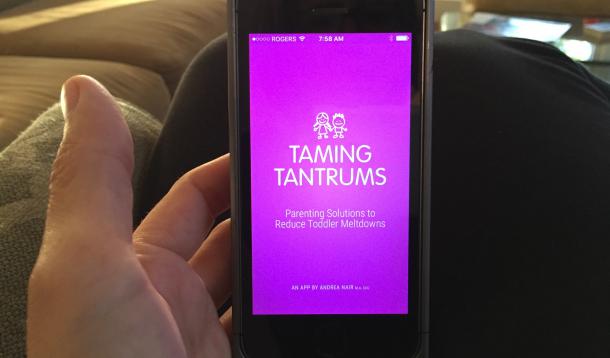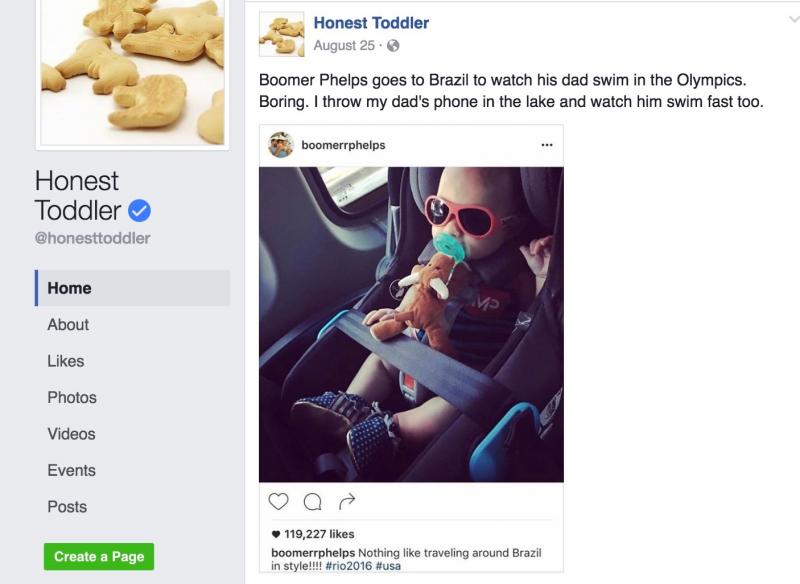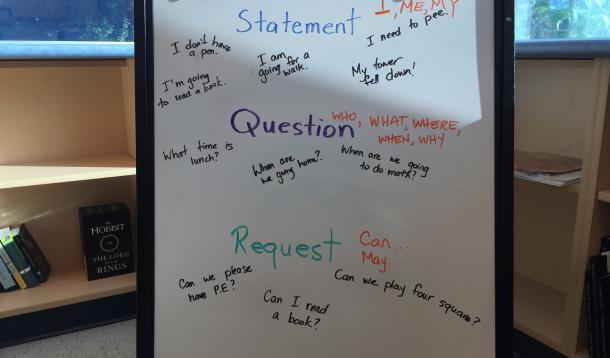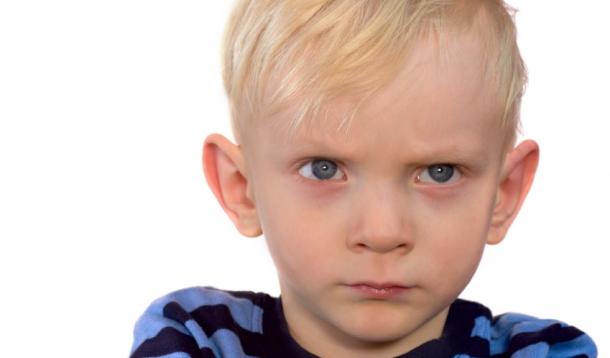
If you’ve been following my writing for a while, you’ll be familiar with my “best of” or “favourite resources” posts. I like to survey my readers and colleagues about twice a year to find the parenting resources they find the most helpful.
This one is a little bit different: I am certainly including the expert-based parenting how-to books, sites, and apps, which I trust enough to pass along to others but I’m also including the ones, which make me collapse with laughter.
I’ve discovered that although we need helpful information when we can’t get our toddlers to bed at a reasonable hour or we’re staring down the third one-hour-long tantrum of the day, we need to laugh about the ridiculousness of parenting almost as much. There are many things I wish I had done differently when I was in the throws of raising young children (mine are seven and nine-years-old now) including taking the time to address the gallows humour side of parenting.
It’s hard to believe that in the time since my children were both toddlers, which is only six years ago, the Internet space has changed radically. I wasn’t even on Facebook six years ago! There has been an explosion of parenting information on the Internet, which has proven to often be helpful, sometimes dangerous, and on many days: full of noise. I hope this list will cut through the noise and give you the information you need in the short time you have. I know it can prove challenging to get and read a whole book while raising toddlers so I’m suggesting a few of those along with resources you can pop in and out of in minutes or with one hand.
These resources are in no particular order of greatness:
1. The book: Rest. Play. Grow. Making Sense of Preschoolers (Or Anyone Who Acts Like One) by Deborah Macnamara, PhD
Deborah Macnamara is a faculty member of the Neufeld Institute, which is a trusted parenting information/ research hub. I suggest following both Deborah and the Institute. I have read this book and feel it is a very good one for parents, preschool caretakers, educators, and even babysitters. I have also been reading Deborah's articles over the years and find her work to be consistently as evidence-based as it can be in the parenting world and just really sound advice.
2. The book, website, and consultants from: Oh Crap! Potty Training by Jamie Glowacki
Potty training can go much more smoothly if parents prepare a positive plan ahead of time and feel confident in the method they are using. I like Oh Crap! Potty Training because the strategies used are in line with positive parenting, positive core belief development, and are quite successful. Definitely get a copy of the book, follow their Facebook page, and seek out help from a consultant early on – get your questions answered before stress develops.
3. The Facebook page: Positive Parenting: Toddlers and Beyond
I have been following this page for several years and have watched it grow from a few thousand to almost a million followers. The founder of the page, Rebecca Eanes, consistently demonstrates her deep understanding of parents, and her desire to support her readers with helpful, accurate information. She recently had a book published called Positive Parenting – an Essential Guide, which I have read and do recommend as well.
4. The website and consultants at: Good Night Sleep Site
The Good Night Sleep Site is the sleep resource I have consistently turned to over the years for help with the children of my family, readers, and clients. The founder, Alanna McGinn has developed a supportive group of sleep educators, which I recommend if you are having any sleep challenges. I believe getting enough sleep is critical and many behavioural problems parents seek help from me for are often solved when the sleep issues are solved first. In addition to one-on-one help, Alanna and her team write many articles, post videos, and suggest books: here is a link to their Facebook page.
5. The website and social media for: Baby Rabies
I had the fortune of presenting on a panel with Jill Krause, the founder of Baby Rabies, last year in Washington, DC at the Dad 2.0 Summit 2016. In the time of preparing and conducting that group presentation, I was consistently impressed with her level of knowledge, empathy, and presenting/ writing abilities. Jill is a broadcast journalist by trade – this training clearly shines in the high quality of her writing, videos, and social media communication. I suggest following Baby Rabies for things like: advice on products that actually work, parenting culture, thoughtful opinion pieces, and feeling you’re not alone.
6. The YouTube Videos/ training at: My Smart Hands
My Smart Hands, founded by Laura Berg, is a wonderful resource for helping to teach your baby/ toddler sign language. I am a big supporter of using sign language to help you and your little one successfully communicate, which can often reduce the number of intensity of tantrums. Laura’s YouTube videos are very well crafted and viewed by millions of parents. She has also developed a few apps to help with teaching sign language: please visit her site for more information.
7. The website and podcast at: Life of Dad
I love this site and it’s social media outlets for many reasons, one of which is the supportive environment the founders created for dads to reach out to each other. Moms are allowed, too, and are part of this lovely parenting space. I had the fortune of meeting Ryan Hamilton and Art Eddy from Life of Dad when they interviewed me for their podcast show last year (which was a lot of fun!). Actually, I met Ryan several years ago at a Canadian parenting conference and have been following their team since then, watching it grow into a positive online parenting force.
8. The website and YouTube videos from: The Holderness Family
Do you remember the “Christmas Jammies” video that went viral a few years ago? The Holderness Family has continued this fun vibe into a successful parenting entertainment site. Their “This is 40” video in particular had me crumpled into a crying/ laughing mess. I had the opportunity to meet Penn Holderness at Dad 2.0 Summit last year and was struck by his wit, honestly, ability to think quickly, and generally wonderful broadcasting abilities. Penn, along with his wife Kim and their two children, create videos that will certainly put a smile on your face.

9. The Facebook pages: The Honest Toddler (*profanity alert*) and BLUNTMoms
The Honest Toddler is a parenting entertainment site founded by writer Bunmi Laditan. I’m not going to sugar coat this: her posts are really, really funny, and sometimes can be littered with inappropriate, harsh language. Parents tell me that when they read this page they feel heard, understood, and not alone. I can say similar things about the parenting pop-culture website: BLUNTMoms.
10. The Smartphone app: Taming Tantrums by Andrea Loewen Nair (that's me!)
It took me and my team of parenting educator helpers years to develop this toddler parenting resource: a smartphone app called "Taming Tantrums." I really believe in this thing, and am so glad thousands of other parents agree with me! I created this app so that no matter where parents (or Grandparents, daycare workers, babysitters) are, they will have help at their fingertips. I invite you to read this article, which gives more detailed information about what is in the Taming Tantrums app. You can download it from the American iTunes store here, the Canadian one here, and here if you have an android phone. If you live outside of North America, search for "Taming Tantrums" in your phone's App Store.
Disclaimer: I did not receive any payment in funds or kind from anyone on this list above. I realize that there are many wonderful parenting resources beyond this list, and would love to hear your favourites over on my Facebook page so I can add them to my next one.

Young children first start communicating their needs by making statements like, “I’m hungry,” or, “I was playing with that!” We often jump in to help before realizing that they actually haven’t asked us to do that. If kids receive help without asking for it, they may carry on expecting people to consider and address their needs even though they haven’t communicated those.
We can coach our children to move past just stating what’s happening to putting those words into a request. This teaches our children to not get stuck in an entitlement kind of communication pattern, but rather a higher-level thinking one of knowing and communicating needs. Isn’t it hard to really be aware of what is upsetting us or not filling one of our buckets and be able to share that with another? Practice is the key to getting good at this!
I love thinking about statements, questions, and requests because it get us thinking about how we can better communicate our own needs as parents rather than getting stuck in unhelpful thinking like: “I’m SO tired,” and, “This kid is driving me nuts,” or “I’ve HAD IT!” We can turn those into: What can I do to get some rest? Hmmm… I wonder what kind of parenting approach might work here? What’s happening in my child’s world?
Here is the process to shifting from statement to request thinking:
First, acknowledge that you have heard your child’s statement but do not offer help or to “fix” the situation. Say an “I see you…” kind of statement, then smile and nod.
Child: “Mom, I’m hungry.”
Parent: “Okay, thanks for letting me know, “ or “Ah, you’re hungry.” (smile)
If your child repeats himself or gets frustrated that you didn’t jump to give him food, offer a prompt something like this, “Statements are to tell me about yourself. Questions are to get answers to something you don’t know, and a request is a way to ask for help. Which one of those is best for you now?”
For a young child, I’d offer something like this: “You said you’re hungry. Do you need help getting food?”
You can give these examples:
Statements usually just tell us what’s happening like “I am…, I’d like, or I have…” I is the key word.
Questions are asked to get more information. They are usually in the form of: “Who, What, Where, When, Why, and How.”
Requests are for asking for something or for someone to do something for you like this: “May I…” or, "Can you please…”
After you have explained what all of these words mean, you can simply ask:
Is this a statement, a question, or a request?

Explaining that you are happy to answer questions or consider a request helps your child to feel understood and connected with you.
Children will usually habitually announce their statement first before realizing they’ve done this. Calmly redirect your child with: Is this a statement, a question, or a request until the habit is changed. Just today alone, I heard statements from even the older students in my school like this:
“Hey, I was reading that book.”
“I want to sit on the bean bag chair.”
“I am thirsty.”
Good luck! Do you have any questions? Feel free to ask those over on my parenting Facebook page.
![]() RELATED: How to Reduce Morning Power Struggles with Your Kids
RELATED: How to Reduce Morning Power Struggles with Your Kids

Be prepared! Your child might come home after school or daycare and fall apart at your feet. I call this “After School Restraint Collapse.” It’s a thing!
Actually, you might see this in your partner or even yourself. You conduct, orchestrate, produce, think, smile, keep things in your inside brain that you wish you could say out loud, then walk in your front door only to turn into a snarly, crabby person.
Here’s why!
It takes a great deal of energy, mental motivation, emotional containment, and physical restraint to keep ourselves at our best while at work, daycare, or school for other people.
We push ourselves to not be snarly, crabby people where doing so might have seriously negative consequences like losing our jobs, getting sent to the principal’s office, or missing sandbox time. How many times during the day do you wish you could just tell someone off or walk away and cry in the bathroom? But we don’t – we do what we need to in order to “be good” or keep the peace.
After we’ve don’t that all day, we get to the point where we just don’t have the energy to keep this restraint, and it feels like a big bubble that needs to burst.
One of my children used to love going to public school, but pretty much every day was in tears when he got home. He didn’t have a clue why he was in tears, but I knew that he just needed to decompress after keeping it together all day. I steered away from friend playtime or scheduled activities right after school so that he could have time to regroup. This year will be different, as he’ll be attending the new independent school we’re starting. I did keep this dynamic in mind when creating our daily schedule.
I think this dynamic happens in parents, too. I wonder if this is why movies like Bad Mom and Sisters are doing so well! The characters in these films completely lose their restraint and feel better after going wild. I’m sure many of us just want to let go like they did! I also wonder if this is why social media so easily distracts us. After doing things we may not entirely want to do, but have to do, we feel better at laughing at videos of kids spraying themselves in the face with a hose or puppies falling asleep while standing up.
There are seven things we can do, and teach our children to do, to release this restrain bubble that bursts when we get home. You might even try these with your partner.
Greet your child with a smile and a hug instead of, “Do you have any homework?” or “I heard you got in trouble today.” Also don’t ask, “How was your day?” No one really wants to answer this question.
Give your child time to hear his/her thoughts right after pick-up time. If you are driving, put on the radio and stay quiet. If you are walking, say little or just comment on the nice things you notice: “Did you see that cute little yellow bird?” This isn’t the time for big conversations.
Many children do better if they aren’t asked, “Are you hungry?” Assume that many of your children’s tanks are empty when they get home. Fill the physical one by setting out food for them without saying anything. Real food like veggie sticks, cut fruit, cheese, or nuts will give them the boost they need. I also suggest setting out glasses of water, too.
People are actually affected by what is in the space around them – some more so than others. I know mornings can be hectic, but try to leave a fairly tidy house to arrive back home to. I was doing terribly at this before so I decided that each night I needed to do a full “tidy time” (with help from others) so that the house wasn’t a disaster in the morning. I also woke up a bit earlier to put the breakfast/ lunch-making stuff away before leaving for the day.
Arriving home after school or work is not a great time to fire up the vacuum!
Use an age and personality-appropriate way to stay connected with your child when he or she is away from you during the day. I call these connection bridges. I have used things like little post-it notes in the lunch or packing a special treat for my kiddos.
Depending on the personality of your child, provide a way to decompress at the end of the day. Give your child the lead to start talking when he or she is ready. When that time happens, you can inquire about any emotionally intense moments that may have happened during that day.
Also, think about using “play therapy” with your child even if he or she is a teenager! People decompress through play, which helps process the events of the day. Provide time to either do nothing/ rest or play out the day in a physical way. Some younger children like to wrestle, run around, or get in a tickle fight. Older ones might like to go for a bike ride or hammer out their energy on an instrument.
This might sound odd, but being upside down can really help! There’s a reason “inversion poses” are recommended in yoga – this is my favourite decompression method.
“Laughter releases the same tension as tears.” Laura Markham, PhD. Having fun is a great way to release tension from the day.
Does your child fall apart when he or she gets home? Tell me about it over on my Facebook page.
![]() RELATED: My Back to School is Looking Very Different This Year
RELATED: My Back to School is Looking Very Different This Year